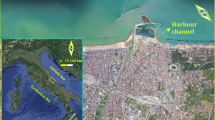Abstract
One of the impacts drainage has on the downstream part of a water system is a higher risk of peak flows caused by heavy precipitation. In the polders of the Netherlands this is a well-known problem. The heavy precipitation flows easily from paved areas and with some delay from unpaved areas into many small canals and through these canals towards the downstream pump station. Here, high water levels can result in an unacceptable high groundwater table. This problem has grown over the past years as more area has been paved and storm events have become more extreme. Until recently in the Netherlands, the solution for this problem was to increase the pump capacity, but nowadays the Dutch Government's opinion and that of the local Water Boards about solving this problem is changing. Rather than shifting the problem to more downstream lying parts of the water system, the philosophy has become “first retain, then store, only then discharge” (Nationaal Bestuursakkoord Water, 2003. Dutch National Policy on Water Management for the 21st Century).
A way to retain water in upstream parts of the waters system is to use real-time control structures in the upstream canals. In this paper a control method is presented that can effectively retain water in the upstream parts, until the downstream part can accommodate this amount of water. The method is based on upstream Proportional Integral-control with adaptation of the set point. The control is referred to as Cascade PI-Control. Basically, the goal of the control method is to fill the available storage equally in the whole area.
Tests have been performed with a calibrated model of an existing polder in the Netherlands. Results show that application of the control method is sufficient to avoid such drainage problems.
Similar content being viewed by others
References
Chow, V.T. 1959. Open-Channel Hydraulics. McGraw-Hill Book, New York.
Mathworks, 1992. Matlab User Guide, the Mathworks, Inc., Natick, MA.
Nationaal Bestuursakkoord Water, 2003. Dutch National Policy on Water Management for the 21st Century.
Roos, B. 2003. Sturing afvalwaterketen Eindhoven en omgeving. Masters Thesis, Delft University of Technology, Faculty Civil Engineering, Group of Water management, The Netherlands.
Schuurmans, J. 1997. Control of water levels in open channels. Ph.D. Thesis, Delft University of Technology, Faculty Civil Engineering, Group of Water Management, The Netherlands.
sobek Manual and Technical Reference. 2000. WL|Hydraulics, Delft, the Netherlands.
Vandevegte, J. 1990. Feedback Control Systems. Prentice-Hall, New Jersey.
van Overloop, P.J., Schuurmans, J., Brouwer, R. & Burt C.M. in press. Multiple model optimization of PI-controllers on canals. Accepted in ASCE Journal of Irrigation and Drainage.
Zuidplas, Nelen & Schuurmans Consultancy. 2003. Faalkansanalyse Ringvaartboezem en Zuidplaspolder. Schieland Water board, The Netherlands.
Author information
Authors and Affiliations
Corresponding author
Rights and permissions
About this article
Cite this article
Van Overloop, PJ. Drainage control in water management of polders in the Netherlands. Irrig Drainage Syst 20, 99–109 (2006). https://doi.org/10.1007/s10795-006-5424-0
Issue Date:
DOI: https://doi.org/10.1007/s10795-006-5424-0




